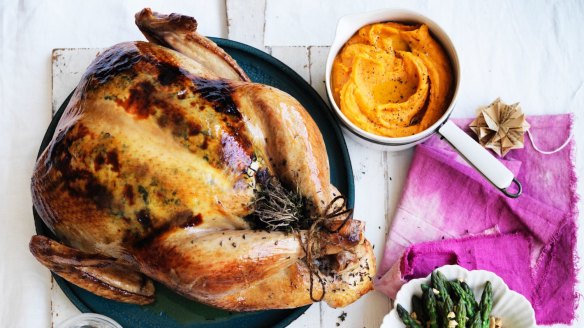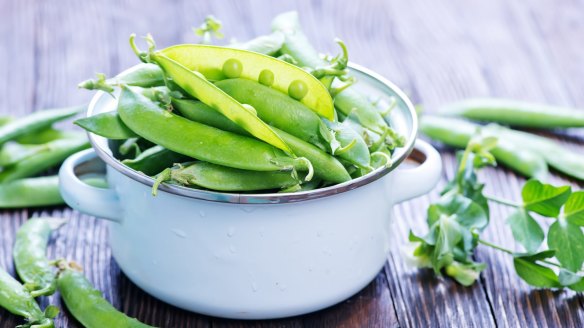How to stuff and cook a Christmas turkey

How do I make sure the stuffing for the turkey is cooked through? L. Valente.
Short of cremating the poor bird, there is the possibility that by cooking a stuffed turkey you risk undercooking the flesh. Undercooked and raw chicken and turkey is a source of salmonella and can lead to food poisoning. A lump of stuffing acts as an insulator that stops heat travelling though the carcass. While the bird is cooking, uncooked juices can seep into the stuffing and cause contamination, unless the stuffing is cooked through. There are some solutions. Continue to cook the bird until the stuffing reaches 75C. Or cook the stuffing separately to the bird, in another pan.
Alternatively, start off with hot stuffing. Cook your onions in butter or oil, add the herbs, seasoning and breadcrumbs and cook until it is very hot and then carefully pack this into the cavity and roast straight away. A variation on this is to make the stuffing, pack it into a cheesecloth pouch, microwave it on high for five minutes, or until the stuffing reaches 85C, and then stuff this pouch into the bird. On Christmas Day get leftovers into the fridge within two hours of cooking and consume within three days.

What's the best way to truss a chook? L. Commons
Dame Edna had a wonderful expression for a man who had therapeutic straps to treat his hernia: "He was trussed up like a Christmas chicken". If you want evenly cooked meat, don't truss. Tying the legs brings the thighs close to the body, meaning you have to cook the bird longer to cook the thigh meat through. In doing so, the breast meat will dry out.
When I was a young woman I lived on a farm and had my own vegetable garden. I used to grow peas and I remember them as being very sweet. Now I can't seem to buy fresh peas that taste as good. O. Sampson
It is so nice to receive handwritten correspondence. Judging by your beautiful cursive script and choice of fine stationary, I guess you were born in an era before celebrity chefs, nylon slacks and perhaps even before penicillin.
There may be a few explanations for your pea problem. The peas you grew could have been a sweet variety that is no longer available. Without wishing to be rude, your taste buds will have deteriorated over the years and you might not be able to detect sweetness as keenly.
What is most likely, however, is that the peas you buy are not freshly picked, a luxury you had when you were growing up. The sugars in peas are rapidly transformed into starch from the second they are picked. Within six hours that transformation will be complete. Unless you buy peas picked within hours and then eat them straight away, your best bet is to buy frozen peas. They are sweeter and more tender than "fresh" peas because they have been frozen within a few hours of picking.
Send your vexing culinary conundrums to brainfood@richardcornish.com.au or tweet to @Realbrainfood.
Brain Food by Richard Cornish is out now from MUP (RRP $19.99, eBook $11.99).
